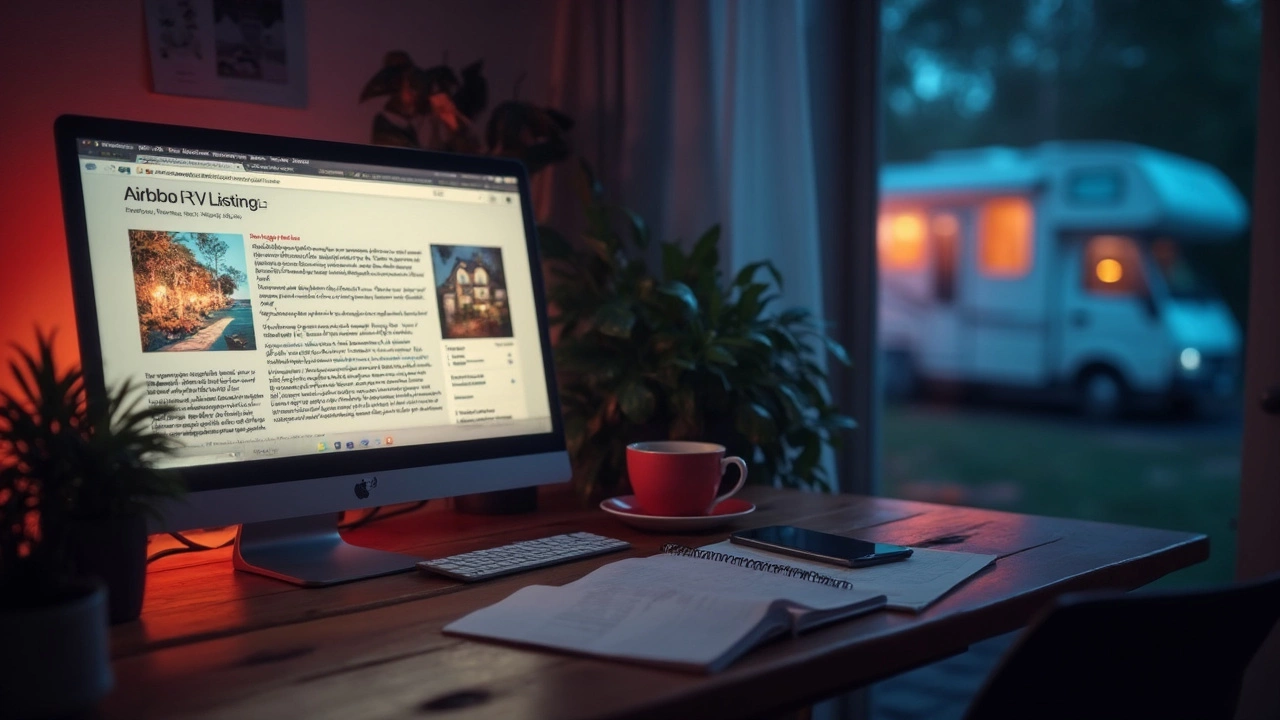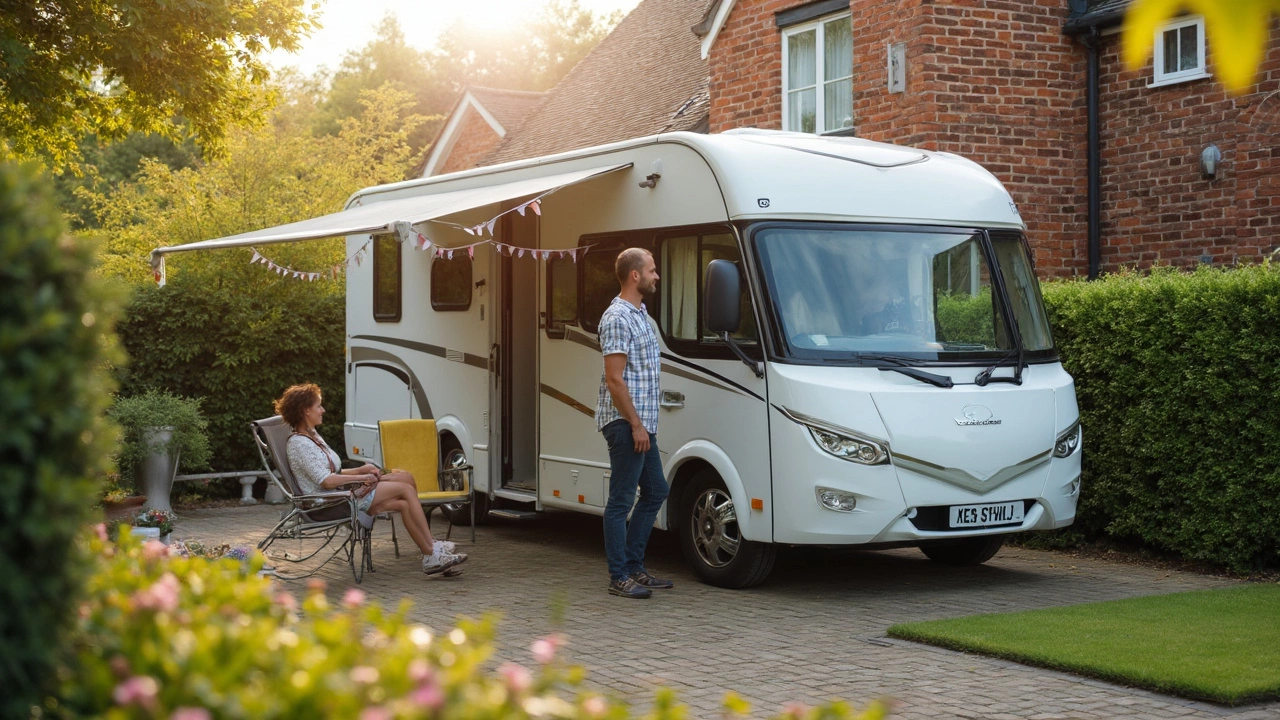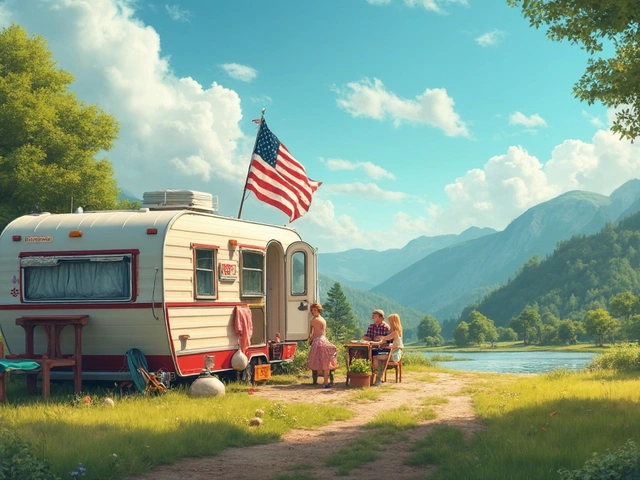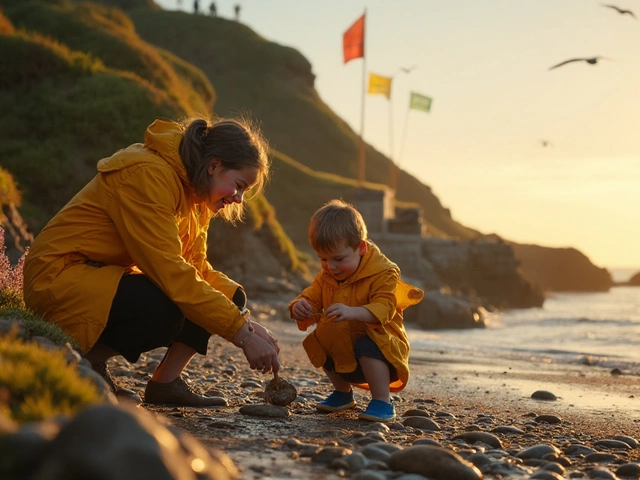So you’ve got an RV parked at home, maybe not getting much use, and you’re wondering if you can turn that into extra money. Good news—you can actually list your RV on Airbnb, but there’s a bit more to it than snapping a photo and posting it online.
The first thing you’ll need to know: Airbnb’s policies don’t allow listings of vehicles for travel (like a moving rental), but they do support stationary stays. That means your RV has to be parked and stay put, whether it’s on private land, your driveway, or at an approved campground with hookups. If you try to skirt this and offer mobile rentals, your listing could get booted off the platform before you make your first dollar.
The spot you park matters too. City codes are all over the place—some towns love RV stays, others have zoning rules that’ll make your head spin. Check your local laws or, if in doubt, talk to someone at your local city hall. A lot of Airbnb hosts get tripped up by this and wind up with a listing that never even goes live.
- Can You Really List an RV on Airbnb?
- Getting Your RV Prepped and Guest-Ready
- Creating Your Winning Airbnb Listing
- Photos and Details That Sell
- Smart Pricing, Booking, and Problem-Solving Tips
Can You Really List an RV on Airbnb?
Airbnb started with people listing spare bedrooms, but now you’ll find treehouses, yurts, boats—and yes, even RVs. But before you get ahead of yourself, there are a few ground rules you need to know about putting up your list RV on Airbnb ad.
First off, Airbnb only allows RVs that stay in one spot. You can’t offer a moving road trip or let guests drive off with your rig. That means the RV has to be parked somewhere legal and safe for guests, with access to basics like electricity and a toilet. Guests want a cool stay, not a headache.
Next, check your location. Where you park your RV matters a ton. Some cities and counties love the idea, but others have rules against living in vehicles or running short-term rentals from driveways. It’s not just Airbnb you’ve got to worry about—local laws can get you shut down or fined if you don’t play by the book. Here’s a heads-up: Airbnb won’t check for permits, but upset neighbors or city officials might.
| Requirement | RV Must Be... |
|---|---|
| Location | Stationary, not offered for transport |
| Utilities | Access to electricity, water, and toilet |
| Zoning/Laws | Compliant with local ordinances |
| Listing Type | Entire place or unique stay, not transport rental |
Now, for the platform itself. Airbnb’s search filters let guests pick “RV” or “camper” under Unique Stays, so your listing can easily land in front of folks looking for something different. According to Airbnb’s own data, unique stays (including RVs) typically get clicked on at higher rates than regular homes. If your RV is quirky or stylish, you’re already one step ahead.
If you want to rent out your RV somewhere like a private backyard, make sure you have the right to do it—don’t just assume your landlord or HOA is cool with it. And if you host at a paid campground, you’ll need their okay first. No one wants a midnight “move your vehicle now” notice.
Bottom line: If you’ve got a stationary RV and local laws give a green light, Airbnb is all in. Just double-check the fine print before you post, and you’ll steer clear of drama.
Getting Your RV Prepped and Guest-Ready
Listing an RV on Airbnb isn’t just about posting it—you’ve got to dial in the space so guests actually want to stay (and pay). It’s all about turning your rig into a place that feels both comfortable and safe, kind of like a friendly tiny home on wheels. Here’s how to get it right.
- Deep Clean Everything: Guests notice busted vents, dust in corners, and the smell of last summer’s campfire. Scrub the kitchen, bathroom, and give the floors a once-over. Don’t forget mattress covers and that funky shower curtain.
- Check Your Systems: Make sure plumbing, electricity (especially outlets and lighting), propane, and temperature controls all work. Give hot water and AC a test run—guests will complain the second these act up.
- Stock the Basics: People expect at least what they’d get in a budget motel. That means clean sheets, pillows, towels, hand soap, toilet paper, trash bags, and kitchen stuff (pans, utensils, coffee pot, some starter basics).
- Safety Upgrades: Install at least one working smoke alarm and a carbon monoxide detector. Double-check that your fire extinguisher isn’t expired. Locks on doors and windows matter, too.
- Curb Appeal: Little touches help. Add outdoor rugs, LED string lights, a doormat, maybe a couple of camp chairs. Outdoor space is a big deal for RV stays.
Here’s a quick checklist of must-haves most guests look for, based on actual Airbnb reviews:
| Feature | Why It Matters |
|---|---|
| WiFi or good cell signal | Even campers want to stream or work remotely |
| Reliable hot water | Cold showers kill good reviews |
| Easy parking/access | Nobody likes hauling bags from down the block |
| Climate control | Stays booked year-round with AC/heat |
| Super clean bathroom | Top reason for repeat bookings |
One more biggie—think about where you’ll set up your RV. If you’re using your backyard, keep it private and offer clear paths to the entrance. If you’re in a campground, mention hookups and amenities in your listing.
Bottom line: people book a list RV on Airbnb listing for the experience, not just a place to crash. Give them what you’d want if you were staying there yourself, and you’ll see more bookings (and better reviews) with every guest.

Creating Your Winning Airbnb Listing
If you want your RV to stop collecting dust and actually start bringing in guests, your Airbnb listing has to pop. The goal is to convince someone scrolling through dozens of options that your camper is exactly what they want, not just another place to sleep.
Start with a headline that tells people exactly what you offer. Something like “Cozy Lakeside RV with Full Hookups – Perfect for Families” works way better than just “Camper for Rent.” Subtle, but it gets attention.
Your description should answer questions before they’re even asked. Is the RV stationary or in a unique spot? How many beds, what’s the bathroom like, do you allow pets, can folks cook a meal, and is Wi-Fi included? Airbnb guests are picky—if they don’t see it spelled out, they’ll just pick the next listing with the info they want. Be clear if the RV is on private property, near a city, close to hiking trails, or if it’s a quiet country escape. Bonus points if you mention special perks, like a fire pit or hammocks.
Here’s what really matters when building your listing:
- List RV on Airbnb in the title or first line of the description to match what people type in while searching.
- Use bullet points for fast facts (people love scanning): number of beds, parking, pet policy, hookup details.
- Highlight anything modern or upgraded—solar panels, comfy mattresses, blackout curtains, even fancy coffee makers help.
- Set clear house rules (no smoking, noise hours, guests allowed, etc.). Makes things easier down the line.
You also have to pick your amenities carefully in the Airbnb checklist. Be honest: if your RV isn’t winter-ready, don’t say it is. Listings that get bad reviews about missing basics (like air conditioning or working plumbing) drop way down in Airbnb’s search ranking. You want to show up on the first page.
Some quick numbers worth knowing: According to Airbnb, unique stays like RVs get up to 61% more wishlist adds than standard homes. Plus, listings with fast, clear replies get booked twice as often. People want hosts who feel reliable.
| Tip | Why It Matters |
|---|---|
| Reply to inquiries within 1 hour | Boosts your ranking and trust with guests |
| Write a detailed description (150+ words) | Increases guest confidence and booking rates |
| Add at least 10 photos | Gets 22% more bookings on average |
| List all amenities and house rules up front | Reduces guest confusion and negative reviews |
Put in the effort when writing your listing, and you’ll notice the difference—better guest messages, more bookings, and those sweet five-star reviews that keep your calendar full.
Photos and Details That Sell
If you want people to pick your RV over all the other shiny options on Airbnb, your photos and listing details have to seal the deal. It’s not just about looking clean; it’s showing guests what makes your camper special. Great photos can boost booking rates by up to 30%–Airbnb’s own data proves it, and listings with twenty or more photos tend to get more clicks and stays.
Shoot during the daytime with good natural light. Start with a clear, wide-angle shot of the outside, then show every main space inside: the bed, kitchen setup, bathroom (if you have one), and any unique hangout spots like an awning or fire pit. Don’t forget the details—guests love seeing thoughtful touches like string lights, coffee makers, outdoor chairs, or even board games.
If you’re not confident with your phone camera, consider hiring a local photographer. According to Airbnb, pro photos lead to more bookings, and a one-time photo shoot pays for itself fast.
- Tidy up—the less clutter, the better.
- Open all the blinds for natural light.
- Show off extras like WiFi boosters, grills, or pet-friendly supplies.
- Take a picture of your RV's control panel or how-tos for appliances.
- Add a few shots of the parking location, especially if your view is a selling point.
The written details matter, too. Be dead clear about what the RV offers and what it doesn’t. Does it have air conditioning, a full fridge, or just a mini one? Is it hooked up to water and power, or do guests need to watch their usage? Use words people search for, like list RV on Airbnb, but keep it natural—jam-packing keywords doesn’t impress guests.
Give a heads-up on quirks. Maybe there’s a step up into the camper, or the hot water runs out fast. If your RV is in a quiet country spot or a short walk from a local diner, mention it. Add your own style, but don’t oversell—good reviews come from real expectations.
| Photo Tips | Purpose |
|---|---|
| Exterior shot | Shows condition and setting |
| Main sleeping area | Guests gauge comfort |
| Kitchen/Bath | Lets guests plan their stay |
| Fun extras (fire pit, grill) | Highlights what’s unique |
| Neighborhood/views | Boosts the appeal with surroundings |
Think like a guest who’s never been in an RV. Make every photo and detail answer questions before they even ask. That’s how you get more clicks, more bookings, and fewer headaches down the line.

Smart Pricing, Booking, and Problem-Solving Tips
Getting your price right is key for any list RV on Airbnb plan. Don’t just guess—check similar RVs in your area on Airbnb and local rental sites. Make sure you’re comparing apples to apples: is their RV newer? Is the setup fancier? Their prices tell you what guests are willing to pay, but if you’re just starting out, aim a little lower to grab your first reviews.
Airbnb also has a smart pricing tool. If you let it, the platform will automatically adjust your nightly rate based on demand and local events. Some hosts love it, but others say it can push prices down too far during quiet times. Try it out for a couple weeks, then compare your results with manual pricing to see what works best for your setup. Sometimes, just adding a small cleaning fee can make a big difference—guests expect RVs to be spotless.
When it comes to bookings, keep your calendar up-to-date and be quick to respond to requests. Airbnb rewards hosts who answer quickly by showing their listings to more users. If you’re booked on another platform, block out those dates on Airbnb so you don’t double-book—nothing’s worse than telling a guest last minute you can’t host.
Now, problems do pop up. Things break, guests miss instructions, or you might get late-night questions about how the heater works. Make a simple welcome guide with clear, step-by-step instructions for your most-used appliances—print it out and put it right in the RV. Also, make sure guests know how to reach you, and set boundaries about late-night emergencies versus non-urgent stuff.
If an issue comes up during a booking, stay calm and use Airbnb’s messaging system to document everything. If something’s serious, like damage, report it through their Resolution Center before leaving a review. Airbnb tends to side with hosts who keep everything in writing and act professionally.
Last thing: ask for feedback after each stay. Those first good reviews will help you move up in the search results, which is the only way to turn your RV-hosting side gig into a steady source of income.






